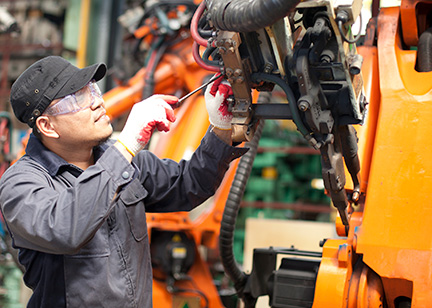The Internet of Things (IoT) seems to expand daily. The devices that connect with the cloud are touching every aspect of our culture—from the smart home to medical devices to the manufacturing industry.
With the need to streamline manufacturing processes to work as efficiently as possible, the IoT provides many avenues for working smarter and leaner with visibility that wasn’t available until now.
Here are 4 Ways the IoT Improves Manufacturing:
1. Warehouse Inventory
Mobile technology equips your warehouse workforce with the tools they need to collect and transmit critical data. Handheld computers and wearables (like Zebra’s WT6000 wrist terminal) eliminate wasted movement and downtime, two of the key objectives in lean manufacturing.
The inventory data that is collected with the use of warehouse mobility provides essential asset intelligence in real time—operator waiting time, defects, overstocks, production waste, and replenishment levels. Managers can use the insights to make informed decisions and adjustments quickly.
2. Asset Management
Your manufacturing assets represent a valuable investment. You can’t possibly maintain line of sight on everything, so using RFID tags gives you that visibility. This IoT solution tracks your equipment, tools, supplies, and other key assets. Not only do you reduce the loss, but you also avoid the downtime that is created when employees are searching for misplaced or lost assets.
The use of smart technology and machine-to-machine (M2M) communication on your assets also collects data on the usage. You get alerts when a machine is experiencing a problem so you can troubleshoot before that situation worsens. The data informs you when equipment is not being utilized enough or, conversely, too much.
As an asset management tool, the IoT protects your assets, and increases the control over their usage, labor, repair, and energy costs.
3. Quality Control
Smart technology can be programmed to detect defects occurring along the production line. This detection reduces waste in materials, labor, and equipment. The data also helps management identify the source of the problem, so they can address it quickly. The result is more efficient flow through production, fulfillment, and shipping, as well as fewer defects and increased customer satisfaction.
4. Workforce Management
Source the data in the cloud from your mobile devices to gauge the productivity of your workforce, without having to walk the floor, so you can get more work done in your office or other areas where you’re needed. From a mobile dashboard, you can easily see bottlenecks in production and divert employees where they are needed, using the mobile technology. Zebra’s ET50 is an enterprise-class tablet that is designed for this elevated grade of ERP functionality in rugged environments.
The Internet of Things has added a strong channel of communication that gives manufacturers key data in real-time.
As lean manufacturing becomes the rule, not the exception, in efficient operations, the IoT will continue to contribute value.
Interested in learning more? Read ‘IIoT: You Need More ‘I’s’ on the Plant Floor.’
Questions?
Call 800-830-9523 or
Email info@L-Tron.com
